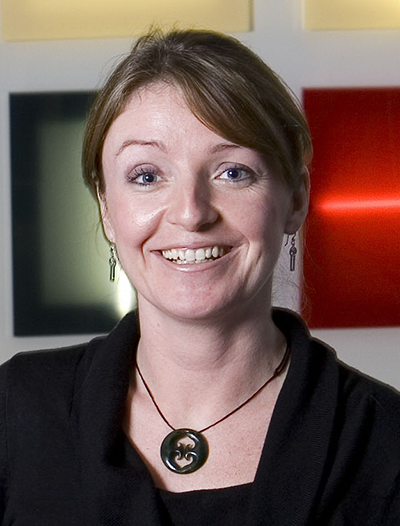Dr Sarah Graham, UK division head of Integrated Environmental Solutions, looks at how to optimise energy and carbon data, and therefore running costs and environmental impact, in a BIM project.
Over the past 12 months we’ve seen an encouraging shift in the understanding of BIM in the UK. The true value of BIM is becoming clearer, in that the ultimate outcome is not 3D CAD and coordinated services design, but the creation, capture, analysis and sharing of information throughout design, construction and operation of an asset.
Embodied carbon and capital cost are highlighted within the BIM Task Group mission statement to reduce waste in the construction and operation of our built environment. The introduction of BIM Level 2 will enable this goal to be achieved, and it is widely perceived that this will be the start of savings and increased efficiency within the industry.
As a result, a clear definition of a client’s aspirations in terms of performance are crucial for a project and ultimately a building’s success.
At the recent BuildingSMART BIM Prospects event, the BIM Task Group’s David Philp suggested that the Soft Landings framework, coupled with the government’s BIM strategy, is a “golden thread”, linking data created during design with the operational phase of buildings. To better manage buildings with a view to reducing cost and carbon, we need to better understand their design intent and how they are operated in reality. In fact, it is estimated that 80% of cost lies beyond the construction team’s involvement.
Energy management using BIM
So, how do we look at energy management using our building information model? The first step is to set up an Employer’s Information Requirements report (EIR) before any design is carried out. Performance against those requirements can be checked and evidenced as design progresses. Typically performance metrics will focus on cost, carbon, and comfort, there may also be specific goals such as BREEAM Excellent and/or a particular EPC rating.
Historically, it’s been challenging to validate how buildings perform in real terms, and to compare that with the expectation that may exist at the design stage. A very simple example of this is when we compare a building’s Energy Performance Certificate (EPC) against its energy bills and Display Energy Certificate (DEC).
This has resulted in what many refer to as a “performance gap”, but in fact the EPC does not actually reflect the building’s real energy consumption as it doesn’t take into account unregulated energy end uses, out-of-hours operation, or special functions within the building.
A methodology for more accurate energy prediction at design stage is provided by CIBSE Technical Memorandum 54, published in August 2013. This advocates the use of dynamic simulation software and creation of a “design” model alongside the “compliance” model which utilises best estimates for loads, occupancy and lighting patterns etc.
The BIM process
The EIR is set out at the “strategy” stage of a project. Its “plain language questions” relate to strategies for providing electricity, gas and water. Even before a model has been created, the designers can respond to questions related to availability of resources on the site and climate considerations.
Moving through to “briefing” and “concept design” stages, a basic building model will be developed and the performance with respect to energy/carbon, daylighting, comfort, water consumption, low to zero carbon technologies, materials’ environmental impact, capital and running cost. We might choose to produce preliminary Part L compliance and EPC certificates at these early stages to ensure that the design is on track.
As design progresses, the layout of the building will change on a regular basis. Construction elements might also change and regular tweaking and re-evaluation of performance is carried out. The final EPC, BREEAM, and Part L certificates are produced during the “design” phase.
In the “build and commission” phase, a construction model is developed and the construction process is underway. Again, there may be a need to revisit the performance metrics if changes are made to the design, such as different windows, or an alternative cladding system.
Once the building and systems are completed we can carry out enhanced commissioning, for instance by pulling metered data from the building back into the simulation software to compare the design scenario with the as built scenario.
In line with the government’s Soft Landings framework, at handover “evidence” – with respect to energy/carbon, cost, visual and thermal comfort, and controls strategy – is created and captured. During “operation and maintenance” we can create a feedback loop, capturing metered data, comparing it with the design scenario and feeding information into subsequent designs. At a future date, when there is a change of use or a proposed refurbishment of the building, an assessment can be made based on the data gathered over time as to what the most cost effective improvement measures would be.
BIM is a mind-set and process, not just technology
Creating a model with level of detail (LOD) appropriate to the design stage is critical. The technology for this has been around for some time and is continually evolving. However, technology on its own does not provide a BIM solution. Process, and the mind-set of people involved in the process, needs to change in order to fully exploit a BIM-enabled workflow. This is starting to happen more and more as the industry moves along the adoption curve.
At IES our experience is that customers who get the process right see the technology fit together much better. This was evident at our recent BIM faculty event where we had guest speakers from the industry speak about their experiences of a BIM-enabled workflow and successful BIM interoperability – a video with highlights of the event is available here.

To better manage buildings with a view to reducing cost and carbon, we need to better understand their design intent and how they are operated in reality.– Dr Sarah Graham, Integrated Environmental Solutions












